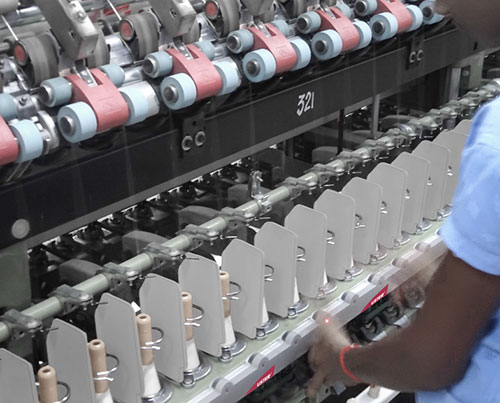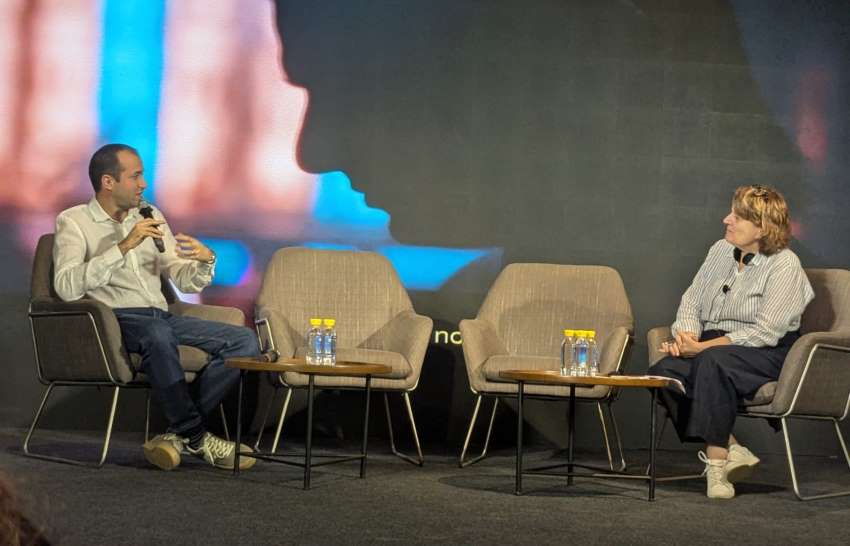FW
Mothercare is closing all its UK stores and online platform. For the half year UK sales fell by almost 20 per cent. The brand’s UK retail business has failed to deliver annual operating profit in over 10 years. Besides facing the same headwinds as most retailers did, Mothercare struggled to deliver a stable gross margin as 70 per cent of the UK’s shop floor space was given to partner brands in the baby category. The margin and the contribution from these brands reduced over time, and when Mothercare started introducing more higher margin Mothercare-branded product, it realised its shops were too large to fill with its own product alone. In the face of severe competition, the company tried to provide a higher level of exclusivity, but despite its efforts most of its third party products could be bought elsewhere at cheaper prices. The store estate was reduced to 80 locations last year as part of a series of company voluntary agreement but not enough trade transferred to the remaining stores or move online. Meanwhile, cash constraints throughout 2018 hampered the firm’s ability to launch an effective marketing campaign to restore its tarnished image.
Mothercare is focusing on building its brand by working more closely with its franchise partners and designing its product with the global consumer in mind.
Zalando, a European e-commerce giant based in Berlin (Germany), is winding up its apparel sourcing from India. As of now, the firm’s private label zLabels is just sourcing men’s shirts from a Bengaluru-based vendor and knitted garments from a Tirupur-based exporter. From now onwards, the brand will source shoes from India and basic garments from Bangladesh.
In apparels, the brand used to source mainly high fashion garments (knitted as well as woven) from 8 to 10 exporters of India. Its sourcing amounted to about 20 million euros per year as every month it used to place an order of 300-400 SKUs (stock keeping units) and every SKU had a minimum order of 1,000 pieces. In many cases, it went up even higher.
zLabels started in 2010 with around 11 brands in apparel and footwear category to cater to its niche customers. “These 11 private label brands – Anna Field, Even & Odd, Friboo, Fullstop, Kiomi, Mint & Berry, Pier One, Twintip, Your Turn, Zalando Essentials and Zign – will be kept for the time being and reviewed in line with this new assortment strategy at a later point.
Karl Mayer’s products have a very good price-performance ratio and they minimise the making-up effort.
This includes especially plain Raschel fabrics with seamlessly incorporated, lace-like decoration tapes, which do not require hem on leg cut outs and waistband. For manufacturers of shoe fabrics, the double-bar Raschel machine with piezo-jacquard technology offers wide-ranging patterning possibilities. Contours and functional details such as stabilisation structures are created directly during the warp knitting process. The weft-insertion warp knitting machine produces a fine, transparent product with an irregularly puffed-up fancy yarn. The finished curtain article resembles a woven fabric in its look, but is produced much more efficiently and without the elaborate sizing process. The new terry tricot machine has up to 250 per cent higher output than air-jet weaving machines, consumes 87 per cent less energy and production without a sizing process. The ISO Elastic 42/21 is an efficient DS machine for the midrange segment for elastane warping on sectional beams. This is geared towards the standard business in terms of speed, application width and price, and offers a high-quality fabric appearance.
Karl Mayer’s software start-up KM.On presents digital solutions for customers‘ support. This young company offers developments in eight product categories, and it has already been successful on the market with digital innovations on the topics of service, patterning and management.
US fashion brands are adding active wear. Own-brand labels Zella (Nordstrom) and Ideology (Macy’s) have grown their assortments of the number of products landing each month and in the frequency of drops. These increases indicate a high demand for private label active wear within department stores.
Targeting the value market, Old Navy frequently features discounted active wear in its e-mail communications and promotes the category at attainable price points. May is the favored month for active wear messaging at Old Navy, while 50 per cent off is the most popular discount offered. American Eagle Outfitters focuses on featuring active wear pieces that have lifestyle appeal to the mass market. In its newly launched Tackma Tech performance collection, neons are prominent alongside stretch and moisture-wicking components. Tommy Hilfiger is also getting in on the active wear action. Tommy Hilfiger also infuses its existing brand DNA into the collection by featuring pieces in its signature American colors.
Bright colors are gaining traction when it comes to men’s active wear. Shades like orange and yellow have increased in product counts by 67 per cent and 143 per cent. Patterns are popular this season in women’s wear accounting for 20 per cent of arrivals compared to 15 per cent last year.
Brazil’s cotton output is likely to be relatively flat in the 2019-20 season. Though over the last two years, Brazilian cotton output and exports have risen significantly the yearly growth rate of planting areas is likely to decrease in the 2019-20 season or even be negative. It may be related to the growers’ return. After the large input, and without obvious returns, growers will maintain normal production for next year.
Before the 1996-97 season, the yield of Brazilian cotton hovered at a low level, and then the yield improved gradually. In the 2018-19 season, the yield has grown by 215.8 per cent from 1996-97. In recent years, the influences of planting areas are larger than that of yield on output. Especially in the 2017-18 and the 2018-19 seasons, with the continual decrease of yield, the large rise of planting areas has pushed up cotton output. Viewed from this correlativity, Brazilian cotton planting areas and yield may be flat in the 2019-20 season, and the change on output may be also limited.
Brazilian cotton output is supposed to rise by 35.9 per cent year on year in the 2018-19 season and exports may rise by 43.7 per cent. In the 2019-20 season, output may edge up by 0.2 per cent and exports may rise by 42.9 per cent.
US denim imports were down 1.52 per cent in the first 10 months of the year. As per Commerce Department’s Office of Textiles & Apparel( OTEXA) figures China’s shipments of blue denim apparel declined 21.97 per cent for the year to date. China’s market share of imported jeans for the 12 months through October fell 18.98 per cent to 20.05 per cent, reflecting a similar picture for overall apparel. China’s declines were most dramatic in September and October. While companies such as Guess and G-III Apparel are sticking with Chinese production, and have been able to negotiate with factories there to mitigate price increases from tariffs, PVH is reducing its exposure. PVH sourcing out of China is about ten per cent of its overall sourcing mix but three or four years ago that was close to 35 per cent to 40 per cent.
US denim imports from Mexico increased 2.88 per cent for the year. Denim imports from Bangladesh grew by a slim 1.48 per cent. Vietnam’s denim exports to the US jumped 23.23 per cent. Pakistan’s shipments rose 5.04 per cent Cambodia’s were up 2.37 per cent. Denim imports from Egypt increased 16.47 per cent, shipments from Jordan rose 6.46 per cent and imports from Nicaragua gained 24.29 per cent. Guatemala also posted a solid gain, up 8.29 per cent.
Vietnam’s garment exports in the first 11 months of this year were up nearly eight per cent year-on-year. But Vietnamese textile manufacturers are seeing orders decline, with buyers moving to other, cheaper developing countries. Normally, by the end of a year, manufacturers have enough orders for the whole of the following year. But this year many do not have enough orders for 2020, with some reporting a 20 per cent drop in orders from last year.
Moreover, many have not signed long-term contracts for products, only monthly or quarterly. Many orders have shifted to emerging countries in Africa, while competition with textiles superpowers like China, India and Bangladesh is becoming increasingly fierce. Even China’s orders are being transferred to countries with preferential tariff rates such as Bangladesh and Cambodia. Not only Vietnamese textile and garment producers, but also its fiber industry is facing increasing competition from foreign businesses and rivals in countries such as India, Thailand and Indonesia.
The difficulties being faced by Vietnam’s textile industry include rising costs of raw materials from China and lower prices demanded by foreign buyers. Vietnam is losing its low labor cost edge over other countries even as its use of technology in production remains limited, leading to reduced competitiveness.
The Steering Committee of the UNFCCC’s Fashion Industry Charter for Climate Action invited political leaders to collaborate to reach net zero emissions by 2050. The UN Climate Change Conference, COP25 is being currently held in Madrid, Spain. The aim of this year’s conference is to encourage sectors to take the crucial steps in the UN climate change process of operationalising the Paris Climate Change Agreement.
The focus of this crucial collaboration highlights the importance of accelerating climate action in both fashion production and consumption countries.
Launched a year ago, the charter marked an innovative sectoral approach to addressing climate action. Today, it has a strength of 120 signatories, which include brands, retailers, suppliers and organisations who are working together to outline pathways that will align the industry with the long-term goals of the Paris Agreement.
To fulfill this mission, signatories are building on existing solutions and initiatives to accelerate progress and identify mechanisms to scale technical transformation within fashion value chains.
The intended outcome of the discussion is a hope that policymakers will create enabling conditions for the fashion industry to deliver industry-wide GHG impact reduction in line with the Paris Agreement.
The National Council of Textile Organisations (NCTO), representing the comprehensive spectrum of U.S. textiles from fiber though finished sewn products, welcomes the deal on the U.S. Mexico-Canada Agreement (USMCA) between the administration and House Democrats and urges the administration and Congress to get the deal across the finish line.
“The new USMCA makes several improvements that would greatly benefit the U.S. textile industry and bolster our $20 billion in annual trilateral textile and apparel trade,” addedNCTO President and CEO Kim Glas. “U.S. textile exports alone to Canada and Mexicothe industry’s top two export markets totaled $12 billion last year, underscoring the importance of the trade deal to the industry’s Western Hemisphere supply chain as well as its growth and investment in the U.S.”
The USMCA updates and modifies the North American Free Trade Agreement (NAFTA) and makes significant improvements, including, creation of a separate chapter for textiles and apparel rules of origin with strong customer enforcement language. Stronger rules of origin for sewing thread, pocketing, narrow elastics and certain coated fabrics. Under the current NAFTA, these items can be sourced from outside the region USMCA fixes this loophole and ensures these secondary components are originating to the region.
The deal also fixes the Kissell Amendment Buy American loophole, ensuring that a significant amount the Department of Homeland Security spends annually on clothing and textiles for the Transportation Security Administration is spent on domestically produced products.
"Uster Sentinel enables practical optimisation for managers and shop floor personnel Uster, Switzerland, 10th December 2019: Even in the best ring spinning mills, there is always room for improvements, among a complex range of options management and operatives need to consider for optimised productivity and profit"
 Uster Sentinel enables practical optimisation for managers and shop floor personnel Uster, Switzerland, 10th December 2019: Even in the best ring spinning mills, there is always room for improvements, among a complex range of options management and operatives need to consider for optimised productivity and profit. Uster Sentinel provides a fact-based overview of spinning machine performance, pinpointing real opportunities for excellence in the use of technology, components, and manpower.
Uster Sentinel enables practical optimisation for managers and shop floor personnel Uster, Switzerland, 10th December 2019: Even in the best ring spinning mills, there is always room for improvements, among a complex range of options management and operatives need to consider for optimised productivity and profit. Uster Sentinel provides a fact-based overview of spinning machine performance, pinpointing real opportunities for excellence in the use of technology, components, and manpower.
Wide-ranging benefits in ring spinning
“We invested in Uster Sentinel ring spinning optimization system with the goal to improve profits but we are delighted that staff also likes the installations,” says Vrajesh Kikani, Managing Director, Kikani Exports. The mill reports a positive impact on profitability resulting from successful optimization of a number of factors, such as waste, ring traveler lifetime, machine speed and energy consumption etc. The production focuses on 100 percent cotton combed compact yarns, in the count range Ne 20 to Ne 40, for weaving and knitting end-uses.
Uster Sentinel also monitors the productivity of all spindles, feeding back all the required links and information to help yarn producers make optimisation decisions at ring spinning based on reliable data.
Among potential problems for all spinners is inconsistent yarn quality characterized by low twist, caused by loose fibers blocking travelers especially excessively worn ones. Only Uster Sentinel can identify spindles malfunctioning in this way, since the issue does not cause end- breaks but still produces yarns which are too weak for high-speed warping and weaving machines. 
The unique Off-Standard feature of Uster Sentinel safeguards against ‘hidden ‘quality risks such as this.
Fact-based feel-good advantages
Reports give status information at five-minute intervals, including end-breaks and piecing during that period. “Information about piecing speeds helps me to identify each operator’s skill level so that I can optimize the operation schedules and processes. Only by assigning manpower carefully it is possible to maintain ideal working conditions,” says M. Kannan, General Manager. Uster Sentinel handles complete personnel management, including shift planning and staff assignment for all machines in the system integrated with monitoring of critical ring spinning parameters.
This makes personnel management in ring spinning fact-based and less time-consuming. Reliable detection of slip, rogue and idle spindles is what makes Uster Sentinel popular among shop floor staff. LEDs indicate spindles showing an issue or positions where an end-break occurs, directing personnel quickly to fix the problem. Incidents are also shown on the machine display, providing an overview of spindles where attention is needed.
Bobbin build-up report gives practical support
End-break levels are a key indicator of ring spinning performance and Uster Sentinel recognizes this by providing an intuitive bobbin build-up report for every parameter influencing end-breaks. Spinners can then initiate improvements relative to their own mill, taking account of ambient conditions and energy consumption, as well as machine speed, wear of mechanical parts and personnel.
Comprehensive analysis of the speed curve and its impact on quality throughout cop build-up is a key element of the enhanced way of optimizing ring spinning performance. Cop build-up quality is the new dimension of optimization, enabling managers to select the correct machine settings for higher production yields, while keeping quality at the desired levels. Furthermore, it is now possible to compare ring spinning performance between different machines.












